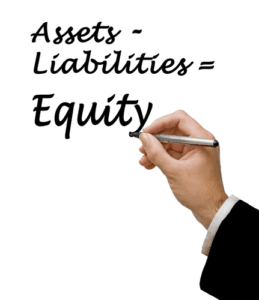
The Statement of Functional Expenses reports Accounting For Architects expenses based on their nature and function. It allows you to remain transparent about your resource allocations to stakeholders and report expenses on your Form 990. Unearned revenue is a liability that arises when an organization receives payment for goods or services that it has not yet provided. This differs from deferred revenue, which arises when the organization has received payment for goods or services it has not yet delivered.
The only 100% free fundraising platform for nonprofits
Save the Children’s annual report clearly states that an independent source audited their financial statements (starting from page 64). Once again, this statement will show transparency and build trust with their donors. Nonprofits use the statement of activities to review changes to their net assets and show revenue and expenses over the accounting year. You can check with GAAP and IFRS practices to ensure you’re correctly categorizing net assets. At times, supporters will give donations stipulating that they can only be used on a specific project or program. The net assets on your statement of financial position are where your organization must list these restrictions.
- They seek a deeper connection to nonprofits they’ll continue supporting, and trust is paramount.
- By following the guidelines presented in this guide, individuals can make informed decisions based on nonprofit financial statements, leading to stronger and more sustainable organizations.
- SoFi does not guarantee or endorse the products, information or recommendations provided in any third party website.
- Failure to update financial statements can result in outdated information and an inaccurate financial position.
- When it’s all put together, a nonprofit statement of financial position is a pretty straightforward document.
- If you’re wondering how to track so many transactions with such precision, know that technology is on your side.
Purpose – Nonprofit Statement of Financial Position vs. For-Profit Company’s Balance Sheet
This can result in financial instability and negatively impact the organization’s ability to achieve its mission. For example, a change in accounting standards may require nonprofits to nonprofit statement of financial position recognize expenses at the time they are incurred instead of when paid. This can impact the nonprofit’s financial position and ability to accurately report expenses. Positive net assets ensure nonprofits have the financial stability to operate effectively over the long term. Nonprofits with positive net assets can weather economic downturns and unexpected expenses while continuing to deliver their programs and services. We’ll also explore the differences between nonprofit and for-profit balance sheets and the impact of accounting standards changes.

Why is revenue recognition complex in nonprofit financial statements?
- Though nonprofits are not required to create an annual report, many organizations compile and release one every year, as it can be an invaluable fundraising tool.
- This includes cash received from customers, cash paid to suppliers and employees, and other operating cash flows.
- We’ve also provided an example nonprofit statement of financial position to guide you.
- While grants can bring in considerable amounts, they often come with strings attached, requiring the nonprofit to meet certain criteria or report on how the funds are used.
- They are responsible for ensuring that the organization’s finances are in order and that the nonprofit statement of financial position is accurate and complete.
Managing the day-to-day accounting tasks to create such a report can be a significant challenge. You may find your team spending countless hours entering receipts, invoicing, running payroll, and reconciling books before you can even start generating the necessary reports to guide your operations. The IRS 990 doesn’t really qualify, since it’s done once per year and first-and-foremost as a tax compliance document. Or create reports at the department level to make sure each team member gets all the information they need (and only the information they need).

The Nonprofit Statement of Financial Position: What You Need to Know
They are responsible for ensuring that the organization’s finances are in order and that the nonprofit statement of financial position is accurate and complete. Liabilities are obligations that a nonprofit owes to others and are typically listed in order of how soon they need to be paid. Liabilities are essential to track because they represent the amount of money a nonprofit owes and can impact its financial stability. Nonprofits may be required to file financial statements with government agencies, donors, or other regulatory bodies to maintain their tax-exempt status or comply with other legal requirements.
- In this guide, we’ll teach you the core components of the nonprofit statement of financial position and how to put one together in a way that’s as painless as possible.
- Read through it and see if you can draw any conclusions about Acme Nonprofit’s current financial status.
- Meanwhile, long-term liabilities represent the obligations that can be paid over multiple years.
- But wait, why is it often referred to as a ‘balance sheet’ and how does it differ from a for-profit one?
- The assets section can be used as a benchmark for evaluating the organization’s performance.
Return to the Internal Reports Introduction page using the link below for greater detail on how to read various reports as well as recommended formatting. Contingent fixed assets liabilities are potential liabilities that may or may not become actual liabilities depending on future events. These include pending lawsuits, warranty claims, and environmental remediation costs.

Loss of Tax-exempt Status – Consequences of a Poorly Managed Nonprofit Statement of Financial Position
Then, you can discuss potential next steps for your organization, whether it’s to grow and expand or to reevaluate your revenue generation and financial management. The numbers pulled for your nonprofit balance sheet all come from your organization’s chart of accounts, which lists out all of your accounts and ledgers to keep your finances in order. Then, these numbers are organized into the three sections of the report (assets, liabilities, and net assets). Get our FREE GUIDE to nonprofit financial reports, featuring illustrations, annotations, and insights to help you better understand your organization’s finances.
Notes to the Financial Statements
Financial statements give donors a better understanding of how your organization is doing. Foundations also typically require nonprofits to provide financial statements when they apply for grants. The nonprofit Statement of Financial Position, also known as a balance sheet, provides information as of a specific date about your organization’s financial health.

They represent the costs incurred by the organization in carrying out its activities and fulfilling its mission. It is essential for nonprofits to track and categorize their expenses accurately to ensure transparency and accountability. In addition to unrestricted net assets, nonprofit organizations may also have restricted net assets. Restricted net assets are funds that are designated for specific purposes by donors or other external parties. These funds are subject to restrictions and can only be used for the specified purposes. It is important for nonprofits to track and report on both unrestricted and restricted net assets to ensure transparency and accountability.
Leave a Reply